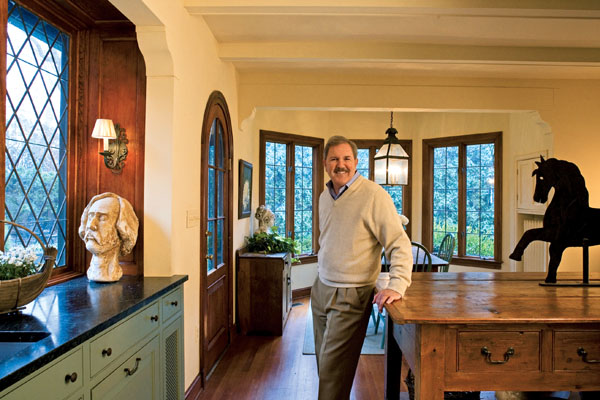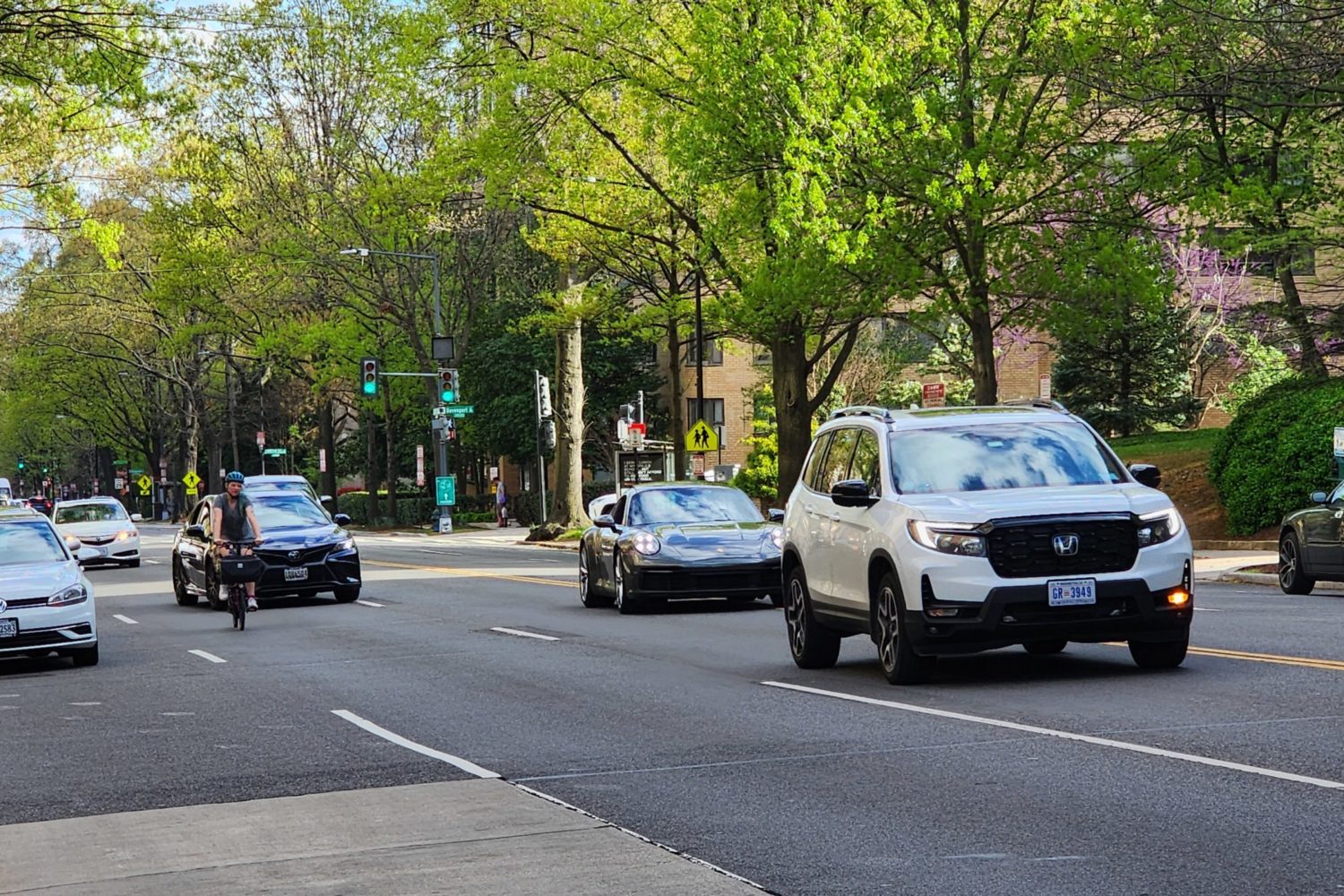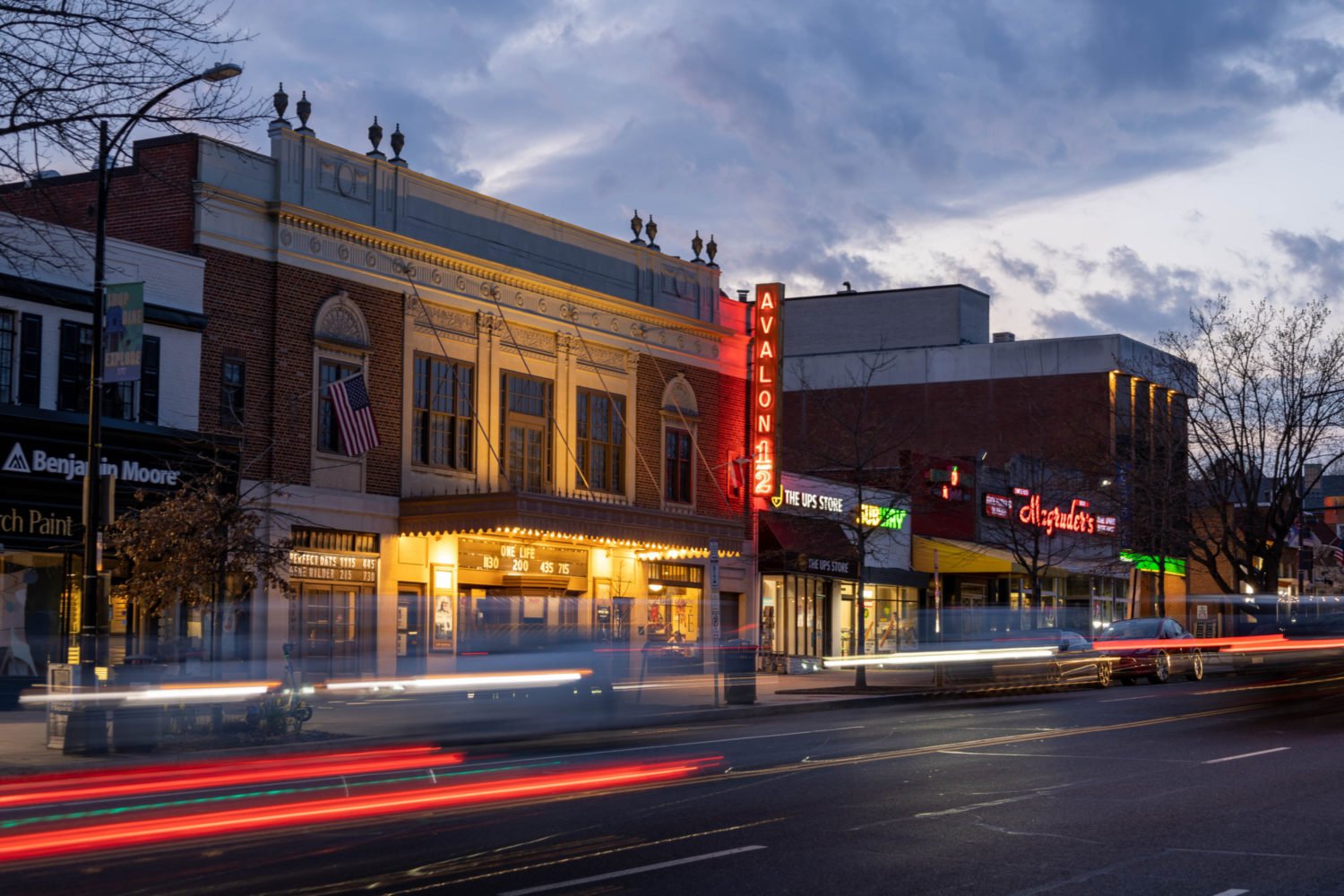Photograph by Ron Blunt.
“I’d always wanted a house on this block,” David Jones says of his Chevy Chase street lined with stately homes. For years, the architect cased the neighborhood anytime he had a job in the area, hoping to find a house he could afford.
When one did go up for sale, it was out of reach, but it remained on the market so long that he made an offer. In 2001, after no other offers, the owner accepted.
“No one knew what to do with it,” Jones says of the house, explaining that in the 1970s someone had built “a very bad modern addition” onto the 1918 English Cotswold revival. The new portion jutted from the rear at an odd 45-degree angle, but Jones decided it would be wasteful to tear the whole thing out.
Instead, he turned the awkward angle into an elegant bay window surrounding a breakfast nook, and he restored the home’s historic dignity with a more appropriate kitchen. “You take the elements of the house and you carry them to the kitchen—like the leaded windows, the stained wood, and the pine floors,” he says, “because you’re trying to create continuity instead of what was here, which was a juxtaposition.”
The biggest challenge, he says, was choosing colors for the kitchen. The farmhouse he’d been living in with his wife and two sons was all white, and even as a designer, he felt lost in all the color choices. They settled on a custom gray/green for the English cabinetry: “We must have had 12 different color samples on the cabinets at one time.”
As with many architects, aesthetics won over practicality in some features. “You do things to yourself that you wouldn’t do to other people,” says Jones.
The refrigerator and freezer, hidden behind cabinet panels to retain a traditional look, are a long way from the sink and stove. The plan may be less convenient, but it keeps the look streamlined. An island topped with beautifully worn flooring from an old building in Vermont makes up for some of that lost counter space.
Jones lives with his wife, Susan, in the 21⁄2-story, four-bedroom house. He says it’s not their dream home, but he’s content to have it be their last—except for the “glass box on an island in Maine” he wants to build for vacationing once their two sons’ college tuitions are paid off.
This article is part of the 2008 Great Home Design package. To see the rest of the package, click here.


















